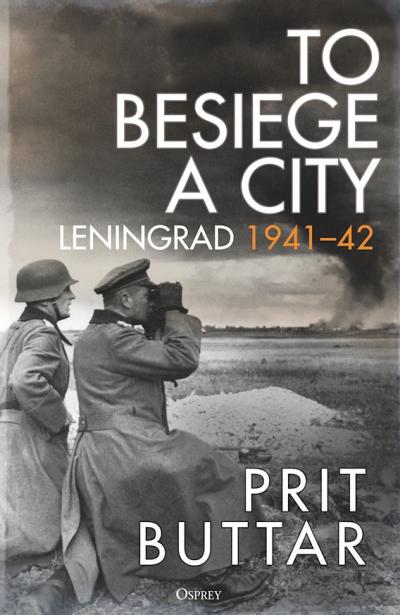| Title: | To Besiege a City - Leningrad 1941-1942 |
| Writer: | Buttar, Prit |
| Published: | Osprey Publishing |
| Published in: | 2023 |
| Pages: | 464 |
| Language: | English |
| ISBN: | 9781472856 |
| Review: | The Eastern Front battle (from summer 1941 to spring 1945) was of a scale and intensity that overshadowed all other battlefields. It was only on the Eastern Front that the outcome of World War II was decided. The Siege of Leningrad, alongside the German advance towards Moscow, the Battle of Stalingrad, and the Battle of Kursk, can undoubtedly be considered one of the most compelling episodes in that colossal struggle. In early September 1941, the advancing German armies encircled the major metropolis of Leningrad from the southwest and southeast, with Finnish support from the north. It wasn't until January 1944 (after nearly 900 days) that the Red Army was finally able to break the German blockade around the city definitively. For hundreds of thousands of Leningrad's residents, this liberation came too late - they had perished due to artillery bombardments, air raids, and, most notably, the famine in the practically isolated city, which could only be supplied through transport across the (frozen) Lake Ladoga. Meanwhile, the Red Army and the Wehrmacht were locked in combat in a challenging forested area filled with swampy marshes. The deliberate starving of the city was a cruel intent of Hitler. He had decided not to allow his troops to enter Leningrad and expose them to urban warfare but instead to halt outside its borders. Leningrad would ultimately be destroyed with cannons and bombers. This decision was not solely a military one. Hitler attached, much more than his generals, great political importance to Leningrad. He viewed the former Saint Petersburg, the city where the Russian Revolution had erupted and had subsequently been renamed Leningrad, as the ultimate symbol of communism. It was precisely for this reason that this cradle of Bolshevism needed to be leveled to the ground. For Stalin, conversely, the same held true. This dictator also wanted, not least for political reasons, to hold onto Leningrad at all costs, just like that other city bearing his own name. Civilians and soldiers would pay the bitter price for this. The British author Prit Buttar, originally a physician in the British Army who has over time published a significant number of military-historical books, vividly portrays the well-known battle for Leningrad. He bases his engaging reconstruction on literature and memoirs rather than on his own archival research. While many other books are primarily written from the German perspective, Buttar presents a balanced analysis with a significant focus on the Red Army as well. It's interesting that Buttar begins his story with the founding of Saint Petersburg and also pays attention to the earlier battle for the city during the time of the Russian Revolution. Somewhat notably, his book has a limited time frame – Buttar only covers the German advance in 1941 and the failed Russian counteroffensives in 1942, omitting the subsequent years of 1943 and 1944. For Dutch readers, this is somewhat unfortunate, as the units of the Dutch Volunteer Legion were indeed deployed at the Wolchow Front near Leningrad. The good news is that Buttar is working on a second volume, titled Hero City, covering the period 1943-1944, to be released in 2024. |
| Rating: |    Good Good |
Information
- Article by:
- Jan-Jaap van den Berg
- Published on:
- 09-09-2023
- Last edit on:
- 24-09-2023
- Feedback?
- Send it!
Images


